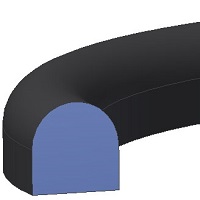Mold Various

- VALQUA No.
- 2060
- Product name
- Synthetic Rubber Molded Product O-Ring
- Shape
- Pentagon shaped/D-shaped

- Features1
- Product Shape derived from O-ring
- Features2
- Rolling resistance, high compressive force (vs. O-ring)
- Features3
- The compression rate can go up with the same area proportion density.
- Inventory status
- Products that are made based on the orders received
- Standard size
- Type
- Squeeze
- Application classification
- Flat surface
- Pressure classification
- None
- Standard material
-
none
- Non-standard quality of material (adaptable material)
-
Non-standard materials are subject to the material selection criteria.
- Sealing direction
-
Flat surface Cylinder Cylindrical piston Cylindrical rod ○ ○ - - - Size
- Custom



